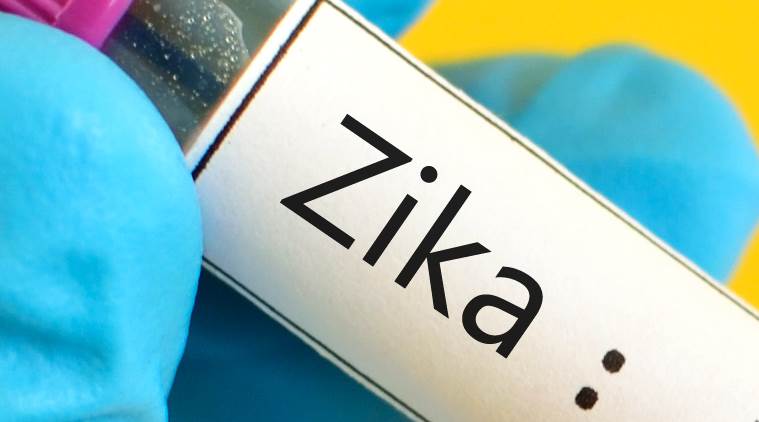 The vector is the Aedes aegypti mosquito, which also spreads dengue and chikungunya.
The vector is the Aedes aegypti mosquito, which also spreads dengue and chikungunya.
IN WHAT is India’s first large outbreak of the Zika virus, 80 cases have been detected in Jaipur so far. Health Minister J P Nadda held a review meeting in Delhi Tuesday, while the Rajasthan government continued surveillance and preventive measures. A look at how the virus spreads and the big risk it involves — the possibility of babies being born with a defect:
What is Zika?
Zika is a viral infection, spread by mosquitoes. The vector is the Aedes aegypti mosquito, which also spreads dengue and chikungunya. Additionally, infected people can transmit Zika sexually. First identified in Uganda in 1947 in monkeys, Zika was detected in humans five years later. Sporadic cases have been reported throughout the world since the 1960s, but the first outbreak happened only in 2007 in the Island of Yap in the Pacific. In 2015, a major outbreak in Brazil led to the revelation that Zika can be associated with microcephaly, a condition in which babies are born with small and underdeveloped brains.
How dangerous is Zika?
Fears around Zika primarily involve microcephaly, especially when pregnant women are infected. Generally, the virus is not considered dangerous to anyone other than pregnant women. Some countries that have had a Zika outbreak, including Brazil, reported a steep increase in Guillain-Barré syndrome — a neurological disorder that could lead to paralysis and death, according to WHO. In 2017, following a study on Brazil’s confirmed cases, the US National Institutes of Health study estimated the fatality rate at 8.3%.
What are the symptoms?
Most people infected with the virus do not develop symptoms. When they are manifested, the symptoms are similar to those of flu, including fever bodyache, headache etc. WHO says these symptoms can be treated with common pain and fever medicines, rest and plenty of water. If the symptoms worsen, people should seek medical advice. Additional symptoms can include the occasional rash like in dengue, while some patients also have conjunctivitis. The incubation period (the time from exposure to symptoms) of Zika virus disease is estimated to be 3-14 days.
How widespread is the Jaipur outbreak?
The 80 cases reported since September 23 have been concentrated in parts of Jaipur. In Tuesday’s review meeting, Health Minister Nadda assured there is no shortage of either drugs or testing kits and he is in touch with Rajasthan Chief Minister Vasundhara Raje in monitoring the situation. The government said 330 teams have been deployed and checked 4.34 lakh people and over 2.04 lakh breeding sites, of which over 74,000 were found to have mosquito larvae. The Rajasthan Health Deaprtment said teams are doing house-to-house surveys, and noting the number of pregnant women in each house in affected areas.
Had Zika cases not been reported in India earlier, too?
On May 26 last year, the WHO issued a report that said: “On 15 May 2017, the Ministry of Health and Family Welfare-Government of India (MoHFW) reported three laboratory-confirmed cases of Zika virus disease in Bapunagar area, Ahmedabad District, Gujarat State, India.”
In July 2017, the Health Ministry said in reply to a question in Parliament that there had been four Zika cases until then — the fourth case had been reported from Krishnagiri district of Tamil Nadu.
What should people do to protect themselves from the latest outbreak?
The Rajasthan Health Department has advised people in the affected areas to stay indoors. Precautions are generally the same as for other dengue — use mosquito nets and repellents — apart from taking steps to prevent sexual transmission.
Is there a protocol that governments follow when Zika cases are reported?
Governments take mosquito control measures such as spraying of pesticides, use of repellents etc. Because of the possibility of congenital abnormalities and sexual transmission, there is also focus on contraceptives. WHO requires countries to counsel sexually active men and women on the matter to minimise chances of conception at the time of an outbreak.